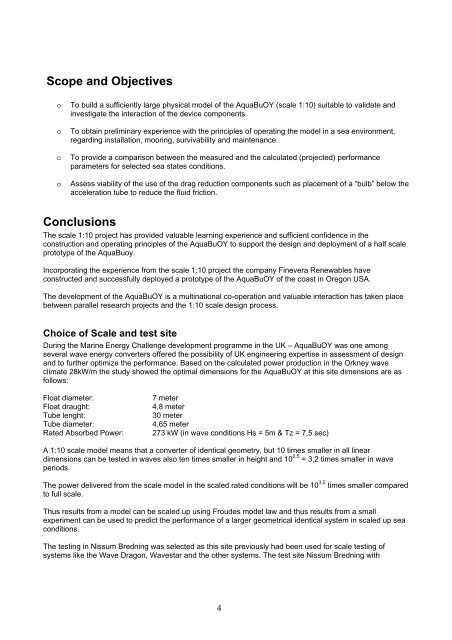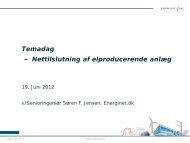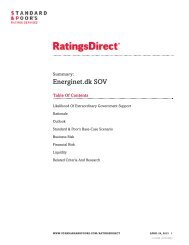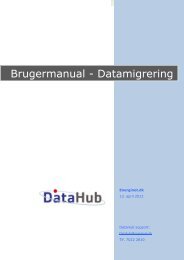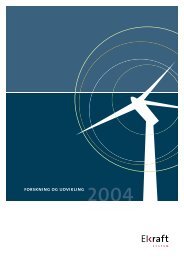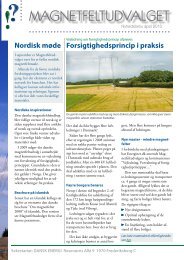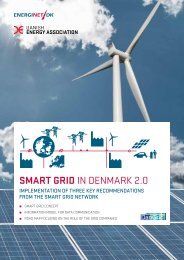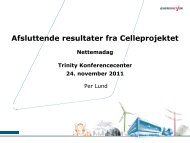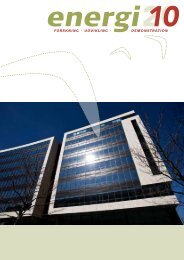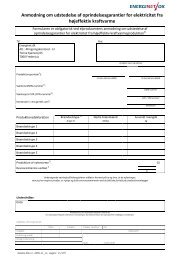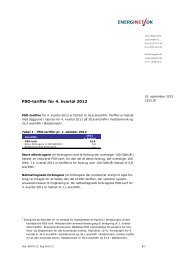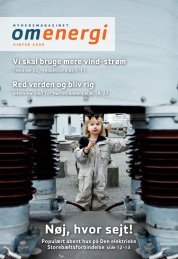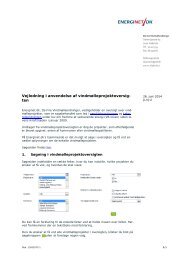AquaBuOY scale 1:10 - Energinet.dk
AquaBuOY scale 1:10 - Energinet.dk
AquaBuOY scale 1:10 - Energinet.dk
You also want an ePaper? Increase the reach of your titles
YUMPU automatically turns print PDFs into web optimized ePapers that Google loves.
Scope and ObjectivesooooTo build a sufficiently large physical model of the <strong>AquaBuOY</strong> (<strong>scale</strong> 1:<strong>10</strong>) suitable to validate andinvestigate the interaction of the device components.To obtain preliminary experience with the principles of operating the model in a sea environment,regarding installation, mooring, survivability and maintenance.To provide a comparison between the measured and the calculated (projected) performanceparameters for selected sea states conditions.Assess viability of the use of the drag reduction components such as placement of a “bulb” below theacceleration tube to reduce the fluid friction.ConclusionsThe <strong>scale</strong> 1:<strong>10</strong> project has provided valuable learning experience and sufficient confidence in theconstruction and operating principles of the <strong>AquaBuOY</strong> to support the design and deployment of a half <strong>scale</strong>prototype of the AquaBuoy.Incorporating the experience from the <strong>scale</strong> 1:<strong>10</strong> project the company Finevera Renewables haveconstructed and successfully deployed a prototype of the <strong>AquaBuOY</strong> of the coast in Oregon USA.The development of the <strong>AquaBuOY</strong> is a multinational co-operation and valuable interaction has taken placebetween parallel research projects and the 1:<strong>10</strong> <strong>scale</strong> design process.Choice of Scale and test siteDuring the Marine Energy Challenge development programme in the UK – <strong>AquaBuOY</strong> was one amongseveral wave energy converters offered the possibility of UK engineering expertise in assessment of designand to further optimize the performance. Based on the calculated power production in the Orkney waveclimate 28kW/m the study showed the optimal dimensions for the <strong>AquaBuOY</strong> at this site dimensions are asfollows:Float diameter:Float draught:Tube lenght:Tube diameter:Rated Absorbed Power:7 meter4,8 meter30 meter4,65 meter273 kW (in wave conditions Hs = 5m & Tz = 7,5 sec)A 1:<strong>10</strong> <strong>scale</strong> model means that a converter of identical geometry, but <strong>10</strong> times smaller in all lineardimensions can be tested in waves also ten times smaller in height and <strong>10</strong> 0,5 = 3,2 times smaller in waveperiods.The power delivered from the <strong>scale</strong> model in the <strong>scale</strong>d rated conditions will be <strong>10</strong> 3,5 times smaller comparedto full <strong>scale</strong>.Thus results from a model can be <strong>scale</strong>d up using Froudes model law and thus results from a smallexperiment can be used to predict the performance of a larger geometrical identical system in <strong>scale</strong>d up seaconditions.The testing in Nissum Bredning was selected as this site previously had been used for <strong>scale</strong> testing ofsystems like the Wave Dragon, Wavestar and the other systems. The test site Nissum Bredning with4


